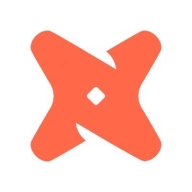

WhereScape RED and dbt compete in the data integration space. dbt holds the upper hand with its modern features and community-driven support model, despite strong support and pricing preferences for WhereScape RED.
Features: WhereScape RED provides automated data modeling, ETL processing, and data warehouse automation, optimizing workflows and accelerating deployment. dbt specializes in SQL-based analytics workflows, adapting to changes quickly, and offering scalability. WhereScape RED focuses on comprehensive data warehousing, while dbt prioritizes modern data transformation techniques.
Ease of Deployment and Customer Service: WhereScape RED simplifies deployment with a guided process and extensive customer service, ensuring efficient operations. Its customer support is highly responsive. dbt relies on its documentation and community forums, which offers flexibility but requires more involvement from technical teams, promoting self-sufficiency.
Pricing and ROI: WhereScape RED demands a higher initial investment but delivers high ROI through automation. dbt's lower costs provide an attractive ROI for agile data transformation. The key difference is WhereScape RED's higher setup expenses balanced by automation benefits, while dbt provides an affordable entry with long-term scalability benefits.
| Product | Market Share (%) |
|---|---|
| dbt | 2.0% |
| WhereScape RED | 1.0% |
| Other | 97.0% |

| Company Size | Count |
|---|---|
| Small Business | 6 |
| Midsize Enterprise | 4 |
| Large Enterprise | 11 |
dbt is a transformational tool that empowers data teams to quickly build trusted data models, providing a shared language for analysts and engineering teams. Its flexibility and robust feature set make it a popular choice for modern data teams seeking efficiency.
Designed to integrate seamlessly with the data warehouse, dbt enables analytics engineers to transform raw data into reliable datasets for analysis. Its SQL-centric approach reduces the learning curve for users familiar with it, allowing powerful transformations and data modeling without needing a custom backend. While widely beneficial, dbt could improve in areas like version management and support for complex transformations out of the box.
What are the most valuable features of dbt?
What benefits should you expect from using dbt?
In the finance industry, dbt helps in cleansing and preparing transactional data for analysis, leading to more accurate financial reporting. In e-commerce, it empowers teams to rapidly integrate and analyze customer behavior data, optimizing marketing strategies and improving user experience.
WhereScape is data warehouse software that automates the Data Warehouse lifecycle. From implementation to maintenance, WhereScape will ensure your data warehouse projects are completed up to 5x faster than manual coding.
We monitor all Data Integration reviews to prevent fraudulent reviews and keep review quality high. We do not post reviews by company employees or direct competitors. We validate each review for authenticity via cross-reference with LinkedIn, and personal follow-up with the reviewer when necessary.